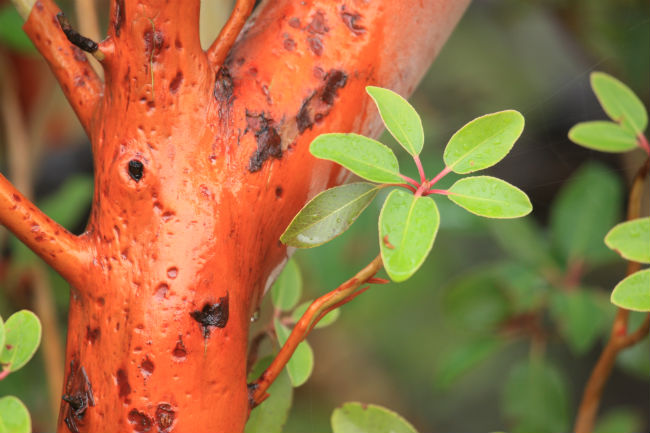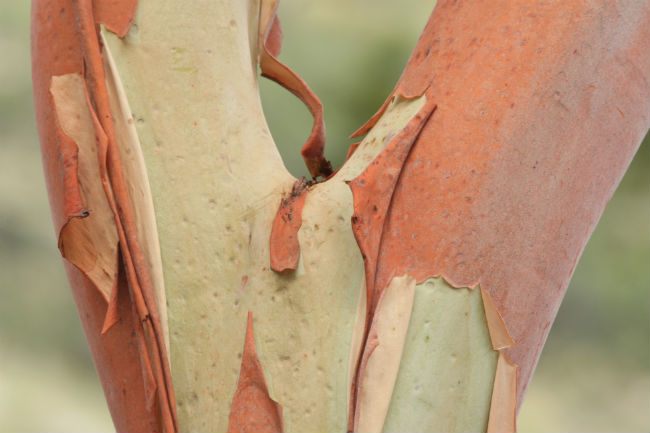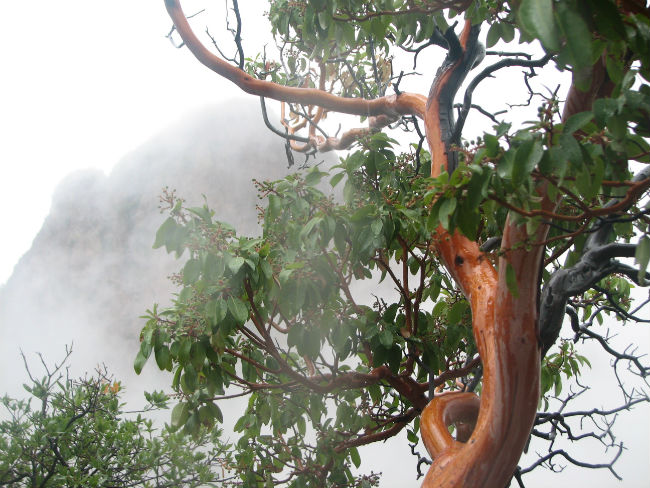



Rocky limestone soil in well-drained east- or north-facing sites, shaded by oaks or junipers. Madrone is evergreen, with white flowers in spring. It is one of Texas’ loveliest trees, with peeling red bark revealing polished skin. Mostly native to the Trans-Pecos, madrone occasionally occurs on the Edwards Plateau as far east as Travis County. Saplings benefit from the rich soil under juniper trees, but their range has diminished as cedar is cleared. Local growers sometimes specialize in madrone, and many native plant enthusiasts try their hand at growing it. However, it is famously difficult to transplant and does much better in West Texas. Still, madrone is listed here as a watersaver option, since it’s a tree that prefers life without automatic irrigation. In heavy clay soils of Bexar County, Texas persimmon and ‘Natchez’ crape myrtle have similar peeling-bark effects and are much easier to grow.
Outside its native range, madrone requires careful attention to establish properly; avoid automatic irrigation as this will only weaken the roots.
One of the loveliest Texas native trees, with peeling bark revealing muscular red trunks.